I don’t know how we even ended up on the subject, but the question was, “If you had to limit yourself to a small amount of spices with which to cook, forever, which would you choose?” I think the amount we decided upon was five items.
My answer came rather quickly. Salt, pepper, garlic, fresh lemon juice and fresh basil. And then I added that I had to have olive oil in which to cook. I can pretty much get by with that. We obviously were not speaking of ingredients. This was about which were your favorite spices to add to the things you cooked and, if so limited, could live with forever.
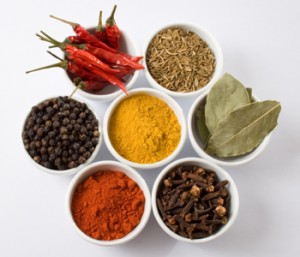 The list of spices and flavorings is nearly infinite—limited only by the size of the planet. I love many spices and seasonings and have used a variety of them. I enjoy many ethnic flavorings and seasonings. There’s the Cajun heat of cayenne, oregano and bay leaf. I love the wasabi and Teriyaki of Japanese cuisine. Chili, lime and cilantro of Mexican food are also favorites of mine. But if I had to choose a limited number and could use only them, I’d choose salt and pepper and fresh garlic, lemon juice and basil. And olive oil. How can you cook without olive oil? I even use olive oil when frying eggs as opposed to butter.
The list of spices and flavorings is nearly infinite—limited only by the size of the planet. I love many spices and seasonings and have used a variety of them. I enjoy many ethnic flavorings and seasonings. There’s the Cajun heat of cayenne, oregano and bay leaf. I love the wasabi and Teriyaki of Japanese cuisine. Chili, lime and cilantro of Mexican food are also favorites of mine. But if I had to choose a limited number and could use only them, I’d choose salt and pepper and fresh garlic, lemon juice and basil. And olive oil. How can you cook without olive oil? I even use olive oil when frying eggs as opposed to butter.
I suppose my style of cooking descends from my Italian-American mother. Except my father didn’t like Italian food. I’m sure I’ve commented on this before. Why do you marry the daughter of Italian immigrants if you don’t like Italian food? So my mother didn’t cook all that much Italian food. I’m sure this was in deference to my father and because she was of the generation wherein the man ruled the roost and a woman’s job was to be a dutiful wife. She learned to cook “American” food. We had roast beef and potatoes. She made pork roast, sauerkraut and even learned to make dumplings from her mother-in-law. It was all quite good to me and I developed a pretty diverse palate. But when my mother cooked Italian food, it was like a cut-diamond amidst the raw gemstones of her other meals.
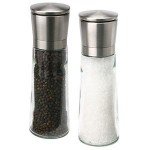 Though we didn’t realize it, the food we ate was different from that of our friends. I never even realized that there was another way to serve broccoli until one evening I was invited for dinner at a friend’s house. In our home, broccoli was steamed and then left to cool, covered in the refrigerator with a few pieces of chopped garlic under the plastic. It was then sprinkled with salt, olive oil and fresh lemon and served cold. At my friend’s house, his mother served us hot broccoli with butter. I sniffed at it and, though I was probably less than ten-years-old, I still recall thinking, “Are you kidding?”
Though we didn’t realize it, the food we ate was different from that of our friends. I never even realized that there was another way to serve broccoli until one evening I was invited for dinner at a friend’s house. In our home, broccoli was steamed and then left to cool, covered in the refrigerator with a few pieces of chopped garlic under the plastic. It was then sprinkled with salt, olive oil and fresh lemon and served cold. At my friend’s house, his mother served us hot broccoli with butter. I sniffed at it and, though I was probably less than ten-years-old, I still recall thinking, “Are you kidding?”
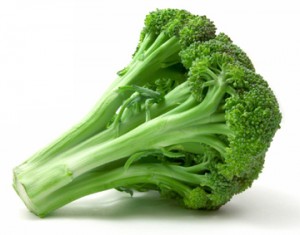 I looked around and no one else was staring at me and laughing as I reacted to this obvious practical joke. They were eating the hot broccoli with butter from the same bowl I’d been served. Amazing! I tried it and it was… okay, I guess is the best way to describe it. It was different, I’ll give Mrs. Shinaver that much. And Mrs. Shinaver made some of the best fried chicken I’ve ever eaten and I didn’t want to do anything that would preclude me from another invitation.
I looked around and no one else was staring at me and laughing as I reacted to this obvious practical joke. They were eating the hot broccoli with butter from the same bowl I’d been served. Amazing! I tried it and it was… okay, I guess is the best way to describe it. It was different, I’ll give Mrs. Shinaver that much. And Mrs. Shinaver made some of the best fried chicken I’ve ever eaten and I didn’t want to do anything that would preclude me from another invitation.
Another shock to my little brain came when a waiter in a nice restaurant suggested an accompaniment to an artichoke.
 The artichoke is a thistle that can be traced back to ancient Rome and Greece. There is evidence of its cultivation as far back as 9th century Naples. And my distant Etruscan ancestors settled in Naples a few centuries ago and that’s from where my grandparents emigrated. The artichoke has become popular in the United States and is frequently offered in finer restaurants as an appetizer, but I’ve heard that it has only spread to the mid-west in the past half-century. I recall my mother telling me about a time when my older cousin was in one of his early years in the seminary. He said that they were served artichokes and he and another boy of Italian descent immediately dug in while the rest of the boys stared in bewilderment and the thorny repast.
The artichoke is a thistle that can be traced back to ancient Rome and Greece. There is evidence of its cultivation as far back as 9th century Naples. And my distant Etruscan ancestors settled in Naples a few centuries ago and that’s from where my grandparents emigrated. The artichoke has become popular in the United States and is frequently offered in finer restaurants as an appetizer, but I’ve heard that it has only spread to the mid-west in the past half-century. I recall my mother telling me about a time when my older cousin was in one of his early years in the seminary. He said that they were served artichokes and he and another boy of Italian descent immediately dug in while the rest of the boys stared in bewilderment and the thorny repast.
Artichokes were a rare treat in my youth and my mother steamed them. We each got one and it was served with a small bowl of olive oil and salt. That was it. We’d gingerly peel off one of the spiky petals (they’re actually bracts, but most people don’t know that or even know what a bract is, so I’ll call them petals), then dip it to the bottom of our bowl to scoop up some salt, and then scrape the delicate flesh from the rest of the fibrous, inedible petal. We loved them! And we especially loved it when we got to the bottom and removed the choke (or flower). We’d be left with the sweet base (or heart) of the flower from which we’d only been allowed to sample in small measure from the petals. We’d then plunge that delectable piece into our remaining olive oil, perhaps add a bit more salt, and savor the sweet goodness.
The time I was ordering an artichoke in a steak house, the waiter asked if I’d like a side of mayonnaise with it. I suppressed a gag. I looked at him like he was deliberately trying to make me ill. What kind of a cruel jokester was this guy?! He obviously wasn’t an experienced waiter what with making disgusting suggestions to diners right before their meal!
I had no idea people actually ate their artichokes with mayo. That I naturally don’t care for mayo could have been a contributing factor, but, to me, the idea was disgusting. I later learned that people also eat artichokes with hollandaise, butter and even vinegar, but I’d only been exposed to olive oil and salt and anything else seemed repulsive. I now prepare artichokes with a bit more preparation than simply steaming and dipping them, and I’ll give you a recipe below.
 So, perhaps I can attribute my choice of five lifetime seasonings to my ancestry and my mother’s cooking. I can cook other types of food. I’ve prepared traditional middle-American food and dabbled with Mexican and once I made beef stroganoff and another time Swedish meatballs. But when I make Italian food, it’s like a hunk of unpolished quartz on a pile of decomposed granite. (‘Cause I’m not as good of a cook as my mother. See above diamond reference.)
So, perhaps I can attribute my choice of five lifetime seasonings to my ancestry and my mother’s cooking. I can cook other types of food. I’ve prepared traditional middle-American food and dabbled with Mexican and once I made beef stroganoff and another time Swedish meatballs. But when I make Italian food, it’s like a hunk of unpolished quartz on a pile of decomposed granite. (‘Cause I’m not as good of a cook as my mother. See above diamond reference.)
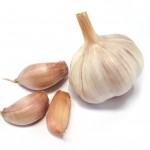 So, if I were limited to a small amount of seasonings, I’d go with the aforementioned salt, pepper, fresh garlic, fresh lemon juice and fresh basil. And olive oil. Obviously with these you can’t make every meal. Garlic and olive oil do not go well with oatmeal. But, if I was forced to choose, I could live on foods I’d prepare with these.
So, if I were limited to a small amount of seasonings, I’d go with the aforementioned salt, pepper, fresh garlic, fresh lemon juice and fresh basil. And olive oil. Obviously with these you can’t make every meal. Garlic and olive oil do not go well with oatmeal. But, if I was forced to choose, I could live on foods I’d prepare with these.
Please share your favorite seasonings with me in a comment below.
My Mom’s Broccoli
- 1lb. broccoli (prepackaged florets if you don’t want to trim the stalks)
- 1 fresh lemon
- Two or three cloves fresh garlic
- Olive Oil
- Salt
Steam the broccoli for a few minutes, until tender. Place on a large serving dish and spread out. Roughly chop a few cloves of garlic and sprinkle amongst the hot broccoli. After it cools for a few minutes, cover with plastic wrap (it’ll still be warm enough for steam to condense on the plastic wrap) and place in the refrigerator. You can also just keep it covered and allow it to cool and then serve at room temperature.
To serve, uncover, drizzle with olive oil, squeeze on lemon juice and add salt to taste. Toss it with a fork and serve.
Artichokes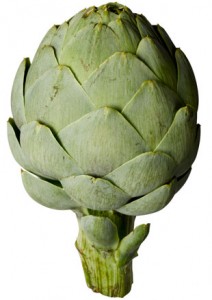
- Two (or four) fresh artichokes
- Fresh lemon (or two)
- Fresh parsley
- Fresh basil
- Six cloves fresh chopped garlic
- Olive oil
- Salt & pepper
I take the artichokes by the bottom (sometimes they have a little stem left and I grab them by that) and I pound the tops onto the counter a few times to loosen up the petals. Then I trim the bottoms as close to flat as possible (not really that critical, but they sit up nicer when you serve them). I turn the choke onto one side and I slice about an inch off the top with a chef’s knife. This removes most of the thorns from the ends of the petals. Then I snip off with a scissors the thorns on any petals that weren’t trimmed.
Place the chokes into a large pot and add about an inch of water. Into each choke, I randomly stuff the chopped pieces of a clove of garlic and then I toss the remaining two chopped cloves into the water. I sprinkle salt and pepper onto each choke (and add a little more salt to the water between the chokes). I finely chop fresh parsley and basil and sprinkle it on top of each choke. I then squeeze the juice of a half of lemon into each choke and finally drizzle olive oil over each one. Besides adding flavor, this will also help carry some of the other seasonings down into the chokes. (The reason I bang them on the counter before beginning is to open them up a bit to allow the seasonings to penetrate down into the chokes.)
Cover the pot and bring to a boil. Once the water is boiling, keep covered and reduce to a simmer. Let them simmer for about 30 to 45 minutes. Take a set of tongs and pluck one of the outer bracts from the choke. When you can pull it off easily, they’re done!
Sometimes I have a bit of flavored oil ready for dipping but they’re pretty tasty with the above seasonings. (You can dip in mayonnaise or butter if you want. Please don’t tell me though.)
And please share your favorite seasonings with me in a comment. Try to limit yourself to five. Or six…





Bill, if I had to limit myself to 5 spices, I agree with your list. I don’t consider olive oil a spice, it’s a cooking oil. Although it does have a nice buttery flavor. Olive oil is my preferred fat in cooking. Your recipe for artichokes is similar to mine, as is the broccoli. OK, now, I’m hungry. Think I’ll whip up some pasta with a nice garlic and basil sauce. A few drops of olive oil will be nice to enhance the other flavors. Yum, Yum!
I’ll be right over, Cher!